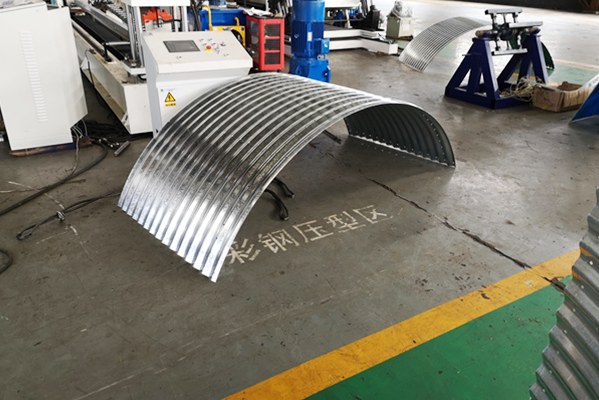Navigation Menu
Contact Us
- Email:
- info@wxavatar.com
- Address:
- Yurong Village, Yuqi Street, Huishan District, Wuxi, China.
Release Date:Mar 18, 2025 Visit:58 Source:Roll Forming Machine Factory
Grain storage manufacturing equipment plays a pivotal role in ensuring food security and minimizing post-harvest losses. As global populations rise and climate patterns become increasingly unpredictable, efficient grain storage solutions are critical for preserving crop quality, preventing spoilage, and maintaining supply chain stability. From traditional silos to advanced climate-controlled systems, the evolution of grain storage technology reflects humanity’s ongoing quest to safeguard one of its most vital resources.
Core Components of Grain Storage Systems
Modern grain storage relies on a combination of infrastructure and technology designed to protect harvested crops from moisture, pests, and temperature fluctuations. Key equipment includes:
1.Silos and Bins
Fabricated from materials like galvanized steel or corrugated metal, silos are vertical structures that provide airtight environments to keep grains dry and secure. Modern designs incorporate conical bottoms for easy unloading and durable coatings to resist corrosion.
2.Aeration Systems
Temperature and moisture control are essential to prevent mold growth. Aerators use fans to circulate air through stored grain, regulating humidity and dissipating heat generated by microbial activity.

3.Conveyors and Elevators
Grain storage manufacturing equipment often includes mechanical systems like bucket elevators and screw conveyors to transport bulk grains efficiently into storage units or processing facilities. These reduce labor costs and minimize handling damage.
4.Monitoring Technology
IoT-enabled sensors and automated control systems track temperature, moisture levels, and pest activity in real time. Alerts enable prompt intervention, reducing the risk of spoilage.
5.Hermetic Storage Solutions
Airtight containers or bags, often made from multilayered plastics, create oxygen-deprived environments that kill insects and suppress fungal growth without chemicals.
Innovations in Grain Storage Manufacturing Equipment
Advancements in material science and automation have revolutionized the industry. For example, stainless steel silos now offer enhanced durability for long-term storage, while AI-driven predictive analytics optimize aeration schedules based on weather forecasts. Additionally, modular storage systems allow farmers to scale capacity flexibly, adapting to seasonal yield variations.
The Global Impact
Effective grain storage mitigates food waste—a critical concern as nearly 30% of global grain production is lost annually due to inadequate storage. By investing in high-quality grain storage manufacturing equipment, nations can stabilize food reserves, support agricultural economies, and enhance resilience against supply chain disruptions.
Conclusion: The Future of Grain Storage Manufacturing Equipment
As demands for sustainable agriculture grow, the innovation and adoption of advanced grain storage manufacturing equipment will remain central to feeding the world. From smart silos to eco-friendly pest management systems, these technologies not only preserve harvests but also empower farmers to meet the challenges of a rapidly changing planet. By prioritizing durable, scalable, and intelligent storage solutions, the agricultural sector can ensure that no grain goes to waste—today or in the decades to come.